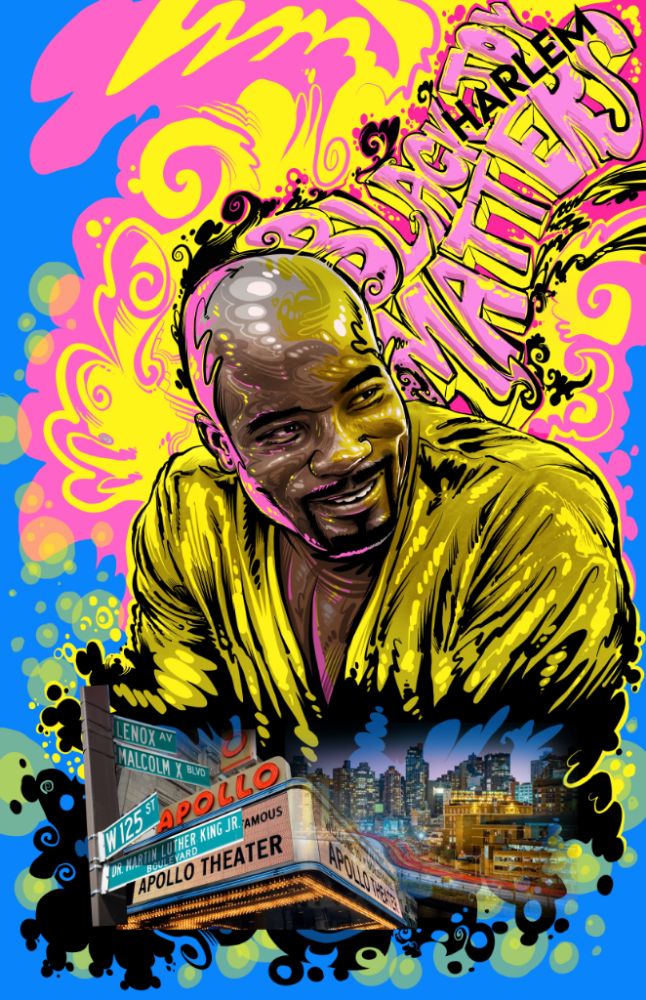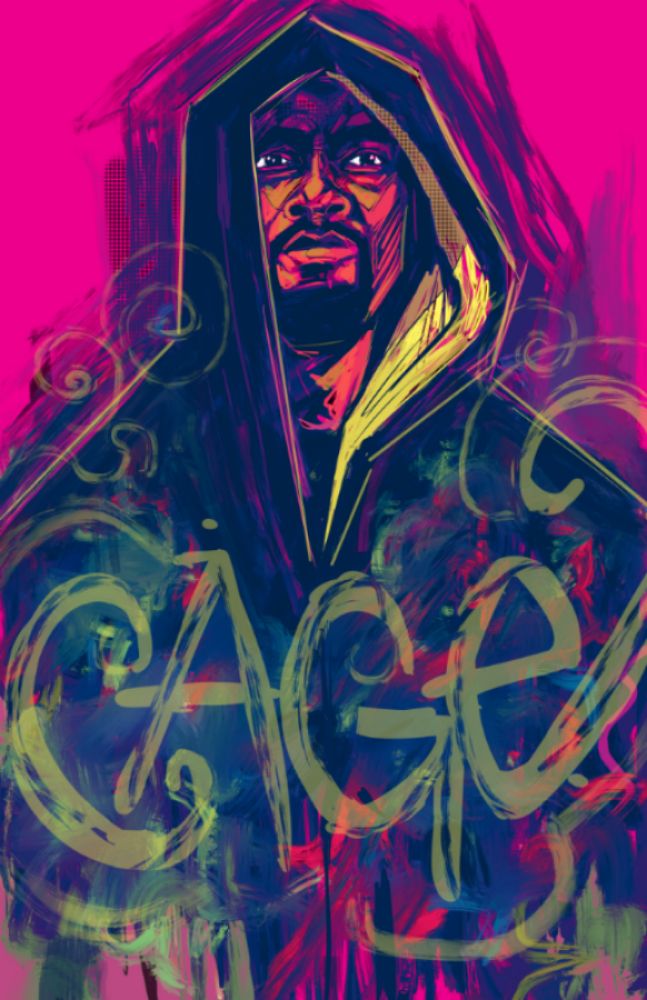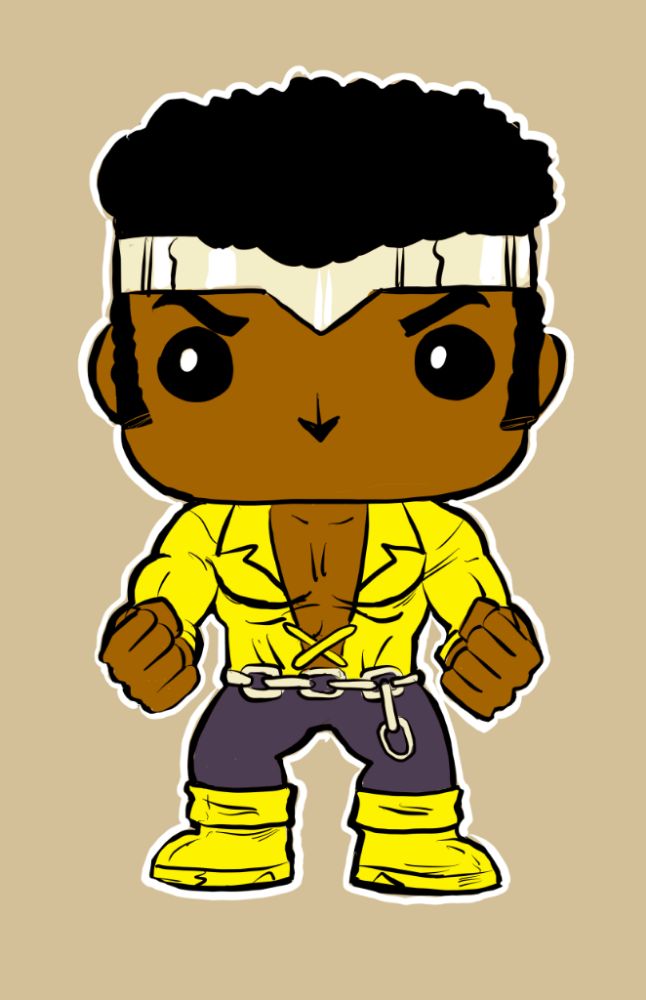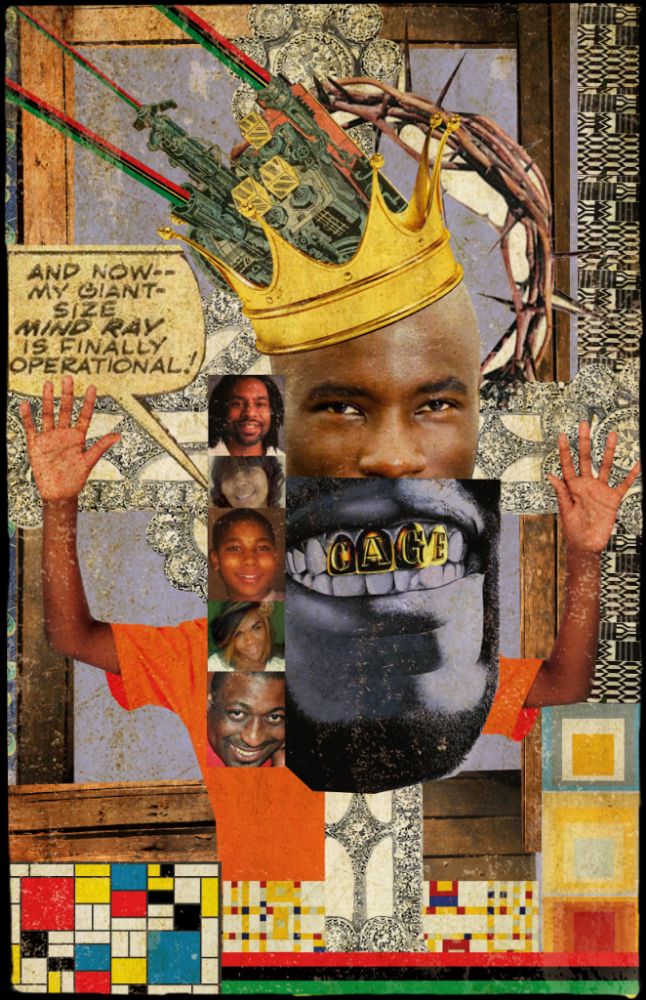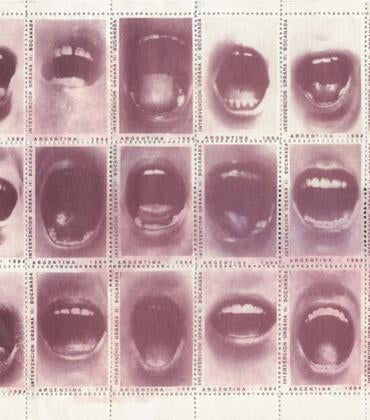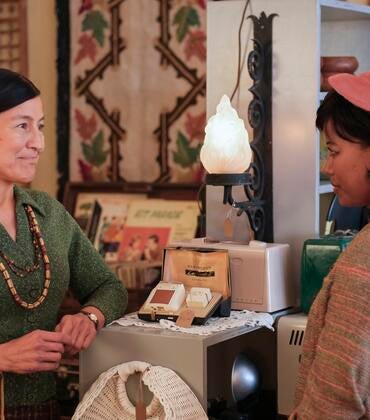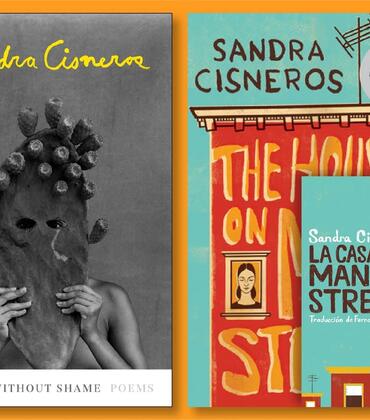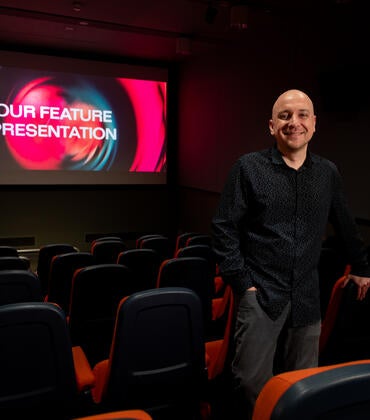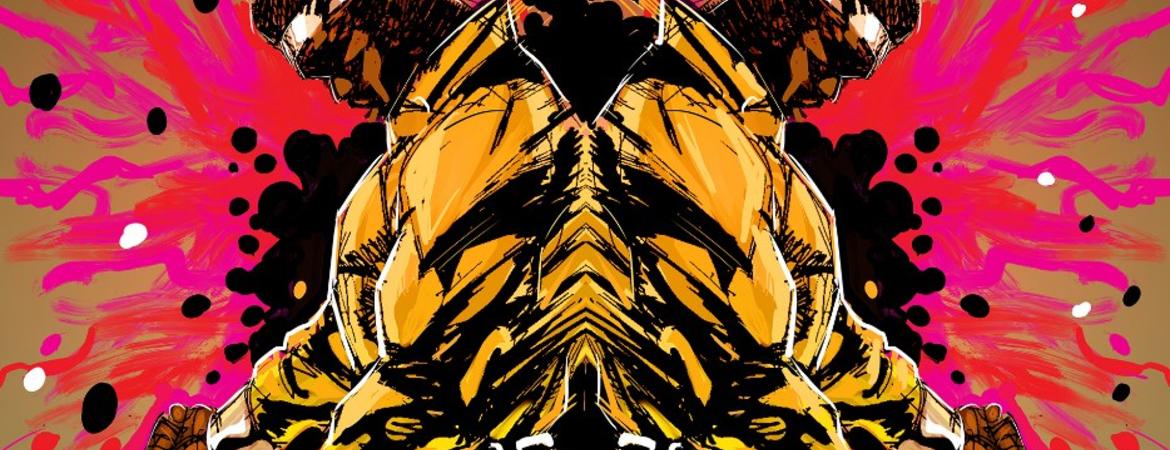
“How do you show that he’s bulletproof?” asks artist and University of California, Riverside professor John Jennings, while discussing Marvel superhero Luke Cage. “You have to shoot him. You have to have a black man during the Black Lives Matter movement shot every episode to prove that he’s bulletproof. And that’s problematic.”
Luke Cage and his role in black representation in media is the focus of a new exhibition debuting at the Culver Center of the Arts on Nov. 17. “Uncaged: Hero for Higher” explores the evolution of the superhero, from his first comic book iteration in 1972 to the recent Netflix TV adaptation, and the ways in which the character has come to represent black masculinity and tensions historically surrounding the black male body in America.
The exhibition is curated by and features the work of Jennings, an Eisner award-winning graphic novelist and professor of media and cultural studies, and Stacey Robinson, an assistant professor of graphic design and illustration at the University of Illinois and fellow comic creator.
Long-time collaborators, the duo produces work together under the moniker “Black Kirby” — a name inspired by Jack Kirby, the legendary comic book artist responsible for creating some of Marvel’s most iconic characters. As Black Kirby, Jennings and Robinson appropriate Kirby’s work and that of other comic artists, presenting it through an Afrocentric lens and exploring themes surrounding Afrofuturism, social justice, representation, magical realism, and hip-hop culture. Their first exhibition, “Black Kirby: In search of the Motherboxx Connection,” toured worldwide, solidifying the duo as among the new voices of the Afrofuturism resurgence.
Now with “Uncaged,” Black Kirby aims to unpack the character of Luke Cage and the many tropes both perpetuated and upended by the hero in his almost-50-year history. Created during the Blaxploitation era, when movies like “Shaft” were popular, Luke Cage became the first black protagonist to be featured as the title character of a comic book. An ex-con-turned-superhero, he gains superhuman strength and impenetrable skin while in prison during an experiment gone awry.
“The inkling of the idea for the exhibition started when I was still teaching at the University of Illinois, because I used to do this lecture called ‘Steel-Hard Skin’ about the mythologies of the inhuman nature of black skin,” Jennings said. “The idea that black skin is impenetrable, or that it takes more punishment, or is harder, that’s actually a story that was told about black bodies to help enable slavery. I always thought it was really interesting that the first major black superhero to have his own book from Marvel, that was his main superpower. It was focused on his skin.”
Jennings said Luke Cage is also different from his white superhero counterparts in how he uses his abilities. Unlike the wealthy and privileged Batman, or the purely altruistic and mild-mannered Superman, Luke Cage uses his powers for profit on the streets of New York.
“He’s an ex-con, so who’s going to hire him?” Jennings said. “Even though you really want more to aspire to for a black superhero, it does speak to the times as far as him dealing with all these issues and how people project negative things onto his body.”
In “Uncaged,” Black Kirby analyzes and deconstructs the evolution of the superhero. The earliest versions of the character are juxtaposed with his most recent form, as portrayed by actor Mike Coulter in the TV series “Luke Cage.”
“Because of different writers dealing with the character, sometimes he comes across as being very stereotypical, and other times he’s really become a proxy for black masculinity in Marvel comics,” Jennings said. “This is the thing that really interests us about the character, because he’s such an open signifier. He becomes all blackness to a certain degree and literally he has a superpower of a stereotype.”
“Uncaged” delves into many of these stereotypes and the ways in which Luke Cage can be used to examine broader ideas surrounding black respectability politics and the self-policing of black communities to adhere to mainstream social values, black patriarchy, the prison-industrial complex, gentrification and cultural appropriation, the history of experimentation on black Americans known as medical apartheid, and black fatherhood. Through the use of digital mixed media, Black Kirby seeks to unpack the character and his “indestructible” body as an index for the black experience of America.
“In most of the projects in the show, we’re hacking into his body, so you see his body in all these different forms,” said Jennings. “There’s a lot of collage. There’s remixing his body. There’s actually affixing his body to different logos, just to play around with the fact that his body is supposedly indestructible, as are stereotypes — they are supposed to be fixed and unchanging.”
Black Kirby has also designed the exhibition as an illustrated syllabus — or “illubus,” as they refer to it. The exhibition provides visitors with a reading list straight from Jennings’ and Robinson’s personal collections and 10 weeks’ worth of prompts that are affixed to the walls with the art and encourage viewers to think critically about the work.
“Each prompt is related to a song by Mos Def,” Jennings said. “In the TV show, they name all the episode titles from different hip-hop artists. I thought this would be a great way to do this, so there’s even a Spotify playlist that goes with the show.”
By constructing the exhibition as a teaching space, Black Kirby aims to engage viewers with the work in a meaningful way that can extend beyond the initial experience of the exhibition.
“I hope that they leave with the show itself as a teachable moment and they start to understand that comics have a lot more to offer than just cheap thrills,” Jennings said. “There’s a lot of work to be done in how comics represent race, class, and other intersections. I want people to understand that these characters have meaning for a diverse array of people and they can teach a lot about our society.”
“Uncaged” is on view at the Culver Center of the Arts from Nov. 17-March 31. A free opening reception will be held Nov. 17 from 4-7 p.m. For more information, visit ucrarts.ucr.edu.
Schedule of Events
Saturday, November 17
- 3 p.m. | free screening of “White Scripts and Black Supermen: Black Masculinities in Comic Books”
- 4-7 p.m. | opening reception
- 7 p.m. | free screening of “Shaft” (1971)
Sunday, November 18th
- 2 p.m. | Experiencing Comics: A Conversation on Uncaged and House of Whispers
Free panel discussion with John Jennings, Stacey Robinson, and Nalo Hopkinson. Moderated by Rachelle Cruz.
Header image "DOUBLECAGED" courtesy of the artists. Based on a sketch by Denys Cowan. Colors and art direction by Black Kirby.
